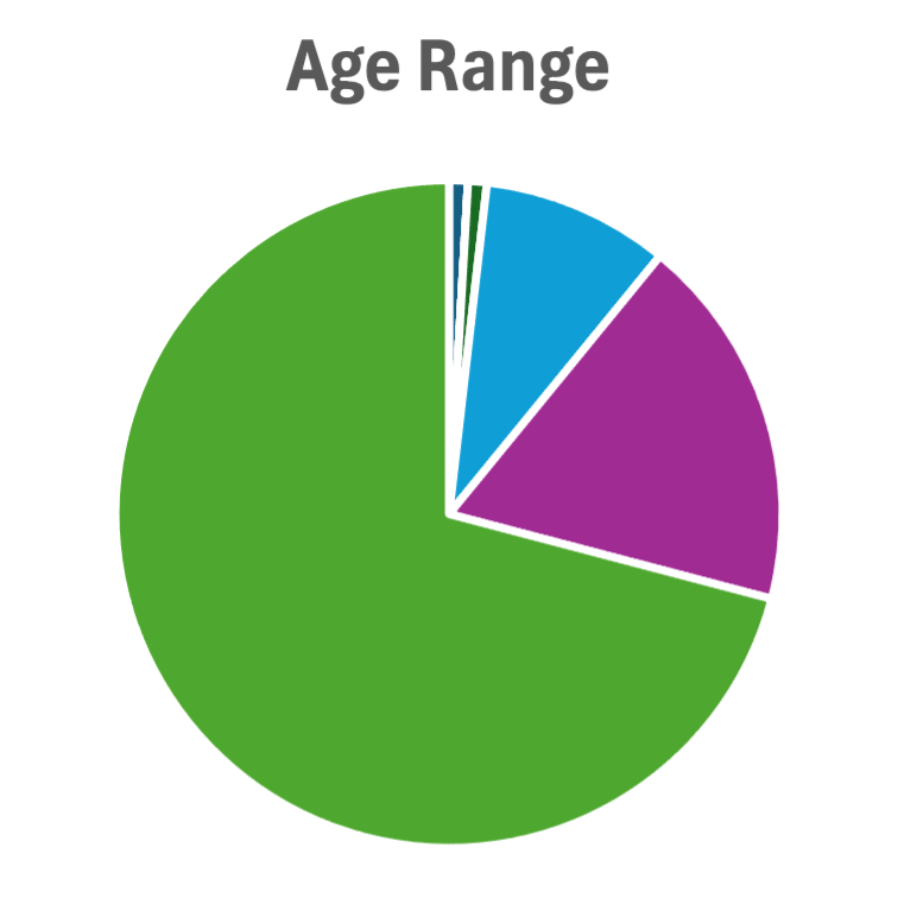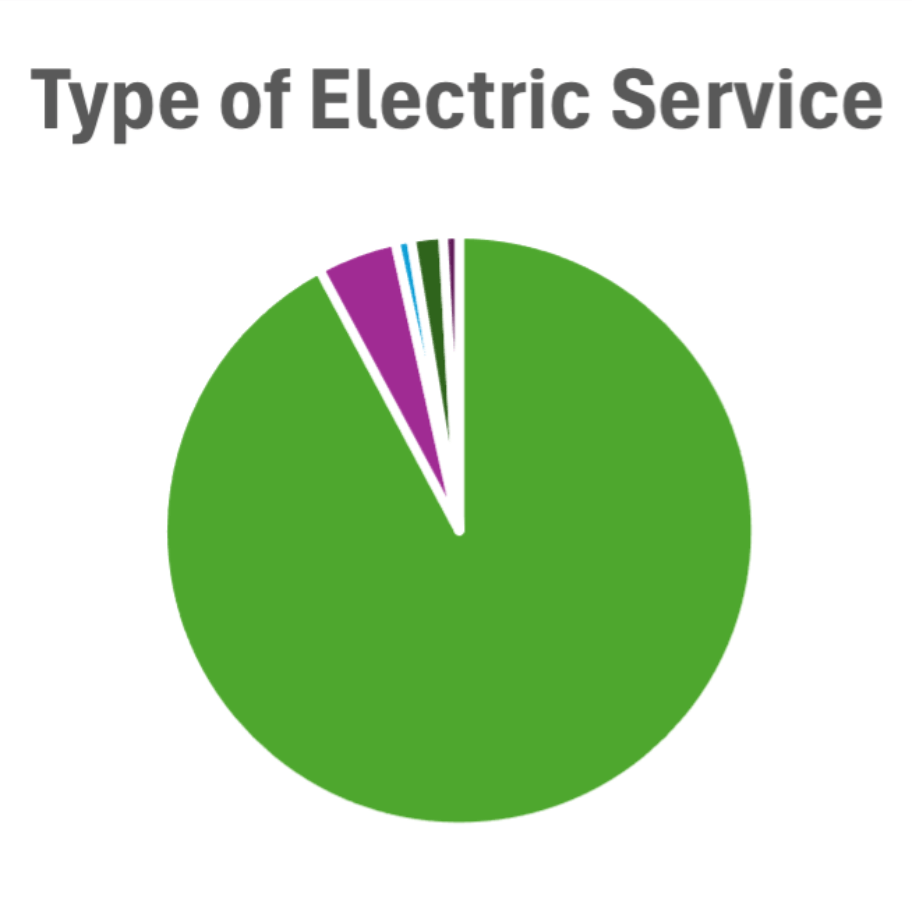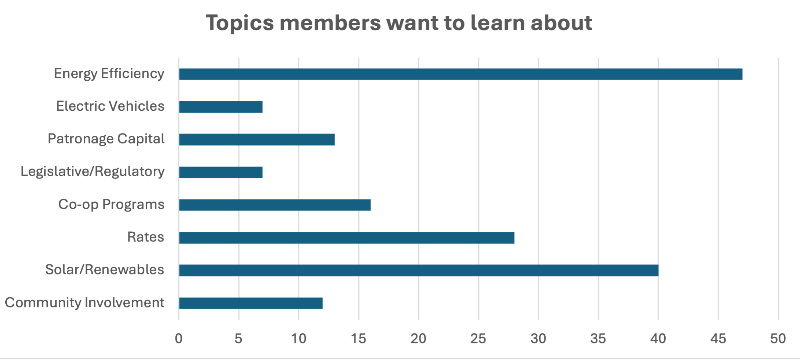Share Your Bright Ideas
We want to know what topics you'd like to learn more about
 We want your bright ideas
We want your bright ideas
We want to know what you’d like to learn more about at your local electric cooperative. Please take this short survey to let us know what interests you the most and share your bright ideas! Be sure to visit this page often to view survey results and information about topics our members request to hear more about.
Click here to take the short survey
We received 115 Bright Idea surveys at our Member Appreciation Open House event on Saturday, October 4, 2025. We thank you for taking our Bright Ideas survey and providing us with feedback.
 Age
Age
- 18-24 (1)
- 25-34 (0)
- 35-44 (1)
- 45-54 (10)
- 55-64 (20)
- 65+ (78)
 Type of Electric Service
Type of Electric Service
- Residential (106)
- Seasonal (5)
- Commercial (1)
- Irrigation/Farm (2)
- Other (1)
What topics would you like to learn more about?
- Community Involvement (12)
- Solar/Renewables (40)
- Rates (28)
- Cooperative Programs (16)
- Legislative/Regulatory (7)
- Patronage Capital (13)
- Electric Vehicles (7)
- Energy Efficiency (47)




